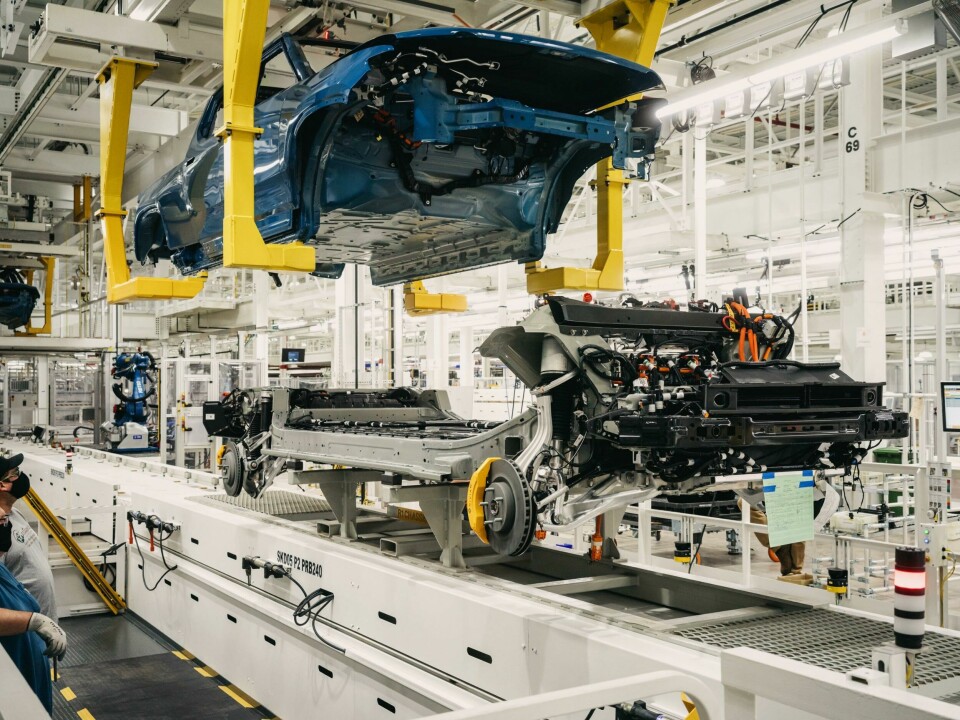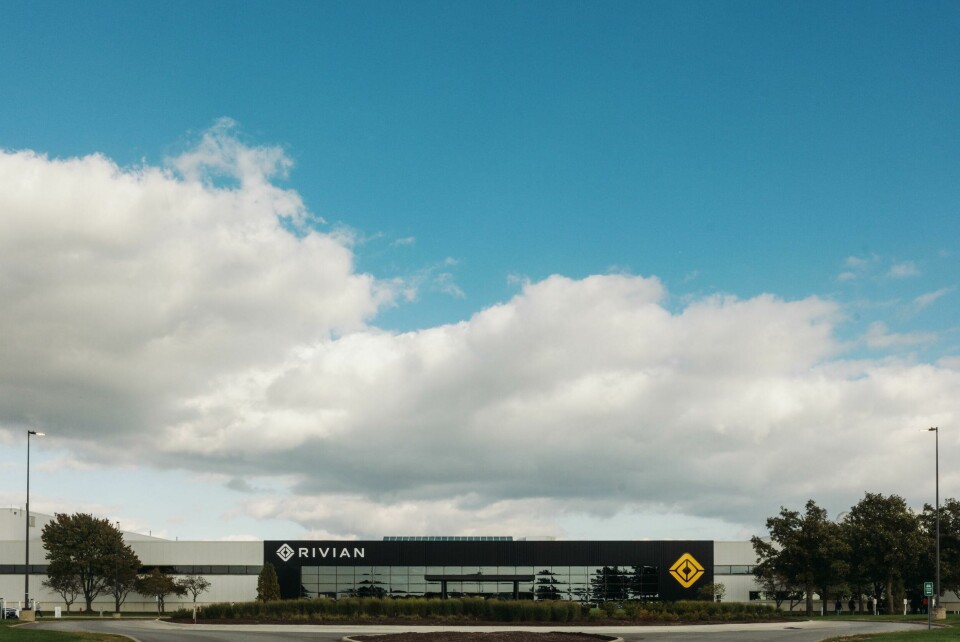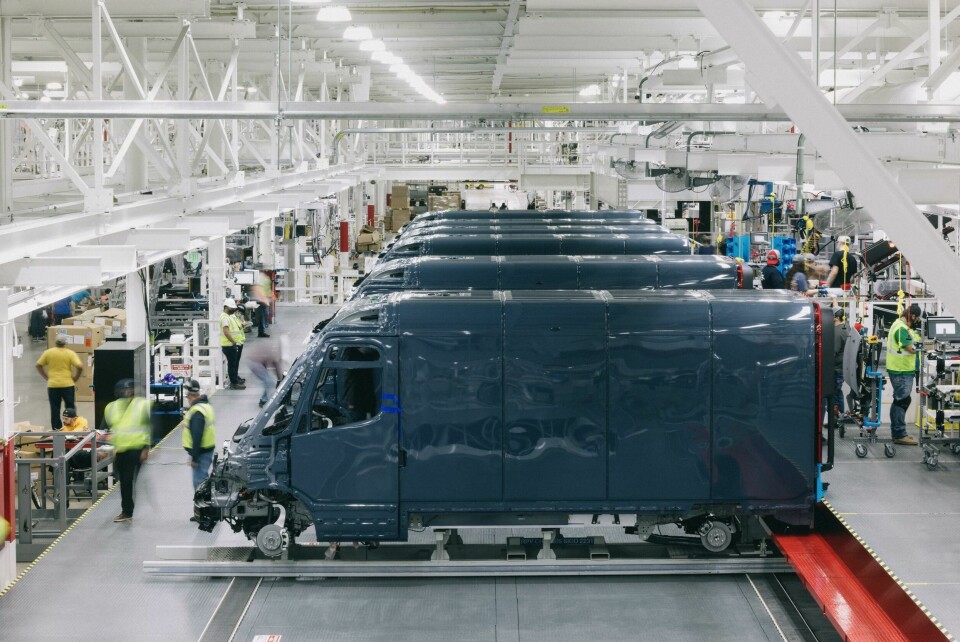Can Rivian navigate production challenges and scale up in the electric vehicle world?
Rivian has emerged as an important player in the EV market, known for its adventure-oriented electric trucks and SUVs. But the OEM faces significant challenges to its production forecasts. Can Rivian maintain its momentum in EV production?

Rivian Automotive has emerged as an important pure-player in the electric vehicle (EV) market, carving out a unique niche with its focus on ‘adventure-ready’ EVs. Founded in 2009 by RJ Scaringe, the US company has rapidly transformed from an ambitious startup to an increasingly significant OEM. Headquartered in Irvine, California, with its primary manufacturing facility in Normal, Illinois, the carmaker’s flagship products, the R1T electric pickup truck and R1S electric SUV, have garnered attention for their blend of ‘rugged capability’ and cutting-edge electric technology, as well as for their production implications.
Primary production hub at NormalOriginally a Mitsubishi plant, Rivian acquired the 2.6m sq. ft facility in Normal, Illinois in 2017, and has since expanded it by nearly 1m sq. ft.
The plant produces Rivian’s flagship vehicles: the R1T electric pickup truck, the R1S electric SUV, and electric delivery vans (EDVs) for Amazon.
Rivian’s skateboard platform is adaptable, capable of housing various battery sizes, from the standard 105 kWh pack to the larger 180 kWh option.
The facility features state-of-the-art equipment, including six large presses for stamping body panels, two separate body shops for R1 vehicles and commercial vans, and a modern paint shop. The production line is highly automated, utilising large robots for assembly processes.
Rivian has invested over $2 billion in the Normal plant, transforming it into a cutting-edge EV manufacturing centre. The company aims to increase its workforce at the facility, targeting the addition of 2,500 manufacturing jobs. In 2023, the plant produced over 50,000 vehicles, more than doubling its output from the previous year.

Flexible production foundation: The skateboard platform
Many of Rivian’s production successes can be fairly attributed to its skateboard platform, which is built on a well-integrated approach to EV design, effectively combining essential drivetrain and battery components within a single, efficient framework. This innovative architecture positions the battery pack, drive units, suspension, brakes and thermal management systems below the wheel line, creating a compact and functional foundation for Rivian’s vehicles. One of the platform’s key advantages is its versatility as it also maximises interior space, allowing for generous accommodations for both passengers and cargo.
The skateboard platform is adaptable, capable of housing various battery sizes, from the standard 105 kWh pack to the larger 180 kWh option, catering to different range and performance needs. Its quad-motor system, featuring independent motors for each wheel, provides precise torque control and enhances off-road capability.
The carmaker has implemented significant engineering improvements [to the R1] including a redesigned body structure for easier assembly and weight reduction.
Overall, this integrated design optimises performance and efficiency, while also streamlining manufacturing processes. It offers Rivian a flexible foundation for developing diverse vehicle types, positioning the company to respond effectively to market demands and advancements in EV technologies.
Pure-EV current production models: R1T, R1S, EDVRivian’s current production lineup consists of three distinct models, each targeting different segments of the EV market. The R1T electric pickup truck, combines ‘rugged capability’ with ‘eco-friendly performance’. Its SUV counterpart, the R1S, translates the same electric powertrain into a family-friendly, three-row vehicle. Rounding out the trio is the EDV, a purpose-built commercial vehicle developed in partnership with Amazon for last-mile deliveries.
Rivian’s recent developments in their R1T and R1S models showcase a compelling blend of strategic product refinement and market positioning.
The carmaker has implemented significant engineering improvements, including a redesigned body structure for easier assembly and weight reduction, along with revised suspension tuning for enhanced ride comfort and handling, with the updates to the R1 lineup positioning Rivian in the premium EV segment. The addition of new drive modes caters to performance-oriented customers, broadening the brand’s appeal while maintaining its adventure-focused image. Technologically, Rivian has made substantial strides, introducing a new autonomy platform with enhanced sensing capabilities and improved connectivity features, aligning with industry trends towards software-defined vehicles.
The second quarter [of 2024] experienced a significant decrease, with production dropping to 9,612 vehicles.
From a production standpoint, these revisions likely streamline manufacturing processes, potentially improving efficiency and reducing costs, while the commonality of components with the upcoming R2 series suggests a forward-thinking approach to scalability. The introduction of diverse powertrain configurations, and more affordable options demonstrates an effort to broaden market appeal and compete across various price segments.
Production capacity and recent output figures
Recent production figures have shown both promise and challenges. In the first quarter of 2024, Rivian demonstrated strong performance, producing nearly 14,000 vehicles and delivering slightly fewer. However, the second quarter saw a planned decrease in production due, according to Rivian, to factory upgrades, with output dropping to just over 9,600 units. Despite this temporary setback, deliveries remained relatively stable. The company remains optimistic, maintaining its goal to produce 57,000 vehicles in 2024, with expectations of increased production in the latter half of the year to meet this target.

Production challenges and strategies
Rivian’s recent production trends have shown both promising growth and some notable fluctuations. In 2023, the company demonstrated strong performance, producing a total of 57,232 vehicles for the full year. This achievement exceeded their original production goal by over 7,000 units and marked four consecutive quarters of rising production, showcasing Rivian’s ability to ramp up manufacturing. However, 2024 has presented a more complex picture. The first quarter saw Rivian produce 13,980 vehicles, maintaining a solid pace. But the second quarter experienced a significant decrease, with production dropping to 9,612 vehicles.
The company’s production capacity at its Normal, Illinois plant stands at 150,000 vehicles per year, with plans to expand to 200,000 when needed.
This decline was not unexpected, as it resulted from planned factory upgrades aimed at improving long-term efficiency and reducing costs.
Despite this temporary setback, Rivian has reaffirmed its 2024 production guidance of 57,000 vehicles. This target, while demonstrating confidence in the company’s ability to recover from the Q2 slowdown, is notably lower than the 80,000 vehicles many analysts had initially expected for the year.
The company’s production capacity at its Normal, Illinois plant stands at 150,000 vehicles per year, with plans to expand to 200,000 when needed. This suggests that Rivian has ample room to increase output as demand grows and efficiency improves.
Rivian’s future production model plans
Rivian’s future production plans centre around the introduction of their new R2 platform, which represents a significant milestone for the company. This midsize platform, unveiled in March 2024, underpins both the R2 SUV and the smaller R3 crossover, marking Rivian’s expansion into more affordable market segments. The R2 platform is a crucial development for Rivian, as it’s designed to deliver performance, range, and cost efficiency. It incorporates advanced manufacturing techniques, including high-pressure die castings and a structural battery unit, which aim to reduce complexity and lower production costs.
This focus on efficiency is vital for Rivian’s goal of making their vehicles more accessible to a broader customer base.
Rivian plans to begin production of the R2 vehicles in the first half of 2026. While specific production capacity figures for the R2 line haven’t been disclosed, the company is making significant investments to support this new product line. Rivian’s existing plant in Normal, Illinois, has a current capacity of 150,000 vehicles per year, with plans to expand to 200,000 when needed.
By targeting a starting price of around $45,000 for the R2, the company is positioning itself to compete more directly with mainstream EV offerings.
The carmaker has plans for a new 400,000-vehicle plant in Georgia, with construction originally set to begin in 2025. These plans have been since revised, with some delays expected to construction as Rivian adapts its overall production strategy.
The Georgia plant is likely to play a crucial role in R2 production. Its large capacity suggests that Rivian is anticipating substantial demand for its more affordable R2 and R3 models.
The company’s ambitious expansion plans indicate confidence in the R2 platform’s potential to drive growth and establish Rivian as a major player in the EV market.
The introduction of the R2 platform and its associated models represents a pivotal moment for Rivian. By targeting a starting price of around $45,000 for the R2, the company is positioning itself to compete more directly with mainstream EV offerings. This move could significantly increase Rivian’s market share and production volumes, potentially transforming the company from a niche luxury EV maker into a volume manufacturer capable of challenging established automotive giants in the electric
Georgia plant status
Rivian’s plans for a $5 billion EV manufacturing facility in Georgia have been temporarily halted, marking a significant shift in the company’s production strategy. Initially announced to support the production of the R2 midsize SUV, the facility was expected to create 7,500 jobs and produce up to 400,000 vehicles annually, with construction slated to begin in early 2023.
However, in March 2024, Rivian announced the suspension of construction as part of its efforts to reduce capital expenditures and focus on cost efficiency. Instead, the company plans to launch R2 production at its existing plant in Normal, Illinois. Despite this setback, Rivian and Georgia officials emphasise that the project is not abandoned but delayed. The site has undergone preliminary preparation, with grading and site work completed.
Rivian views the Georgia facility as a vital component of its long-term production strategy, crucial for scaling operations to meet anticipated demand for its vehicles. While the timeline for resuming construction remains uncertain, Rivian has until the end of 2030 to fulfil its commitments under the economic development agreement with Georgia. This pause reflects the challenges Rivian faces in balancing ambitious growth plans with financial prudence, but the Georgia plant is still poised to play a key role in the company’s future when construction resumes.
The OEM is planning another production pause in late 2025 to prepare for the launch of its R2 model in 2026, with significant production growth is on the cards occur post-2025.
Rivian’s future manufacturing targets and forecasts
Rivian’s global production targets and forecasts indicate a cautious short-term approach while maintaining ambitious long-term goals. For 2024, the company aims to produce 57,000 vehicles, a conservative figure that aligns with its 2023 output of 57,232 vehicles. This decision stems from planned factory upgrades and efficiency improvements at its Normal, Illinois plant, which included a three-week production pause earlier this year.
Looking ahead to 2025, Rivian expects higher output, although specific targets have not been disclosed. The OEM is planning another production pause in late 2025 to prepare for the launch of its R2 model in 2026, with significant production growth is on the cards occur post-2025.
Rivian’s long-term ambitions are substantial, with its existing plant capable of producing 150,000 vehicles annually and plans for the new Georgia facility to be designed for up to 400,000 vehicles per year, currently on hold. The introduction of the R2 platform is expected to drive considerable volume growth as Rivian expands its manufacturing to focus its vehicles on more affordable market segments.


